Equivalent series resistance (ESR) of a capacitor is a crucial factor to consider when selecting a component for your application. It plays a significant role in influencing the overall performance and efficiency of capacitors in various electronic circuits. In this article, we delve into ESR of a capacitor, exploring its significance, its impact on circuit behavior, and applications that demand low and ultra-low ESR capacitors.
What is the ESR of a capacitor?
Equivalent series resistance is a measure of the inherent resistance present in a capacitor. It accounts for the combined resistance of a capacitor’s internal components, such as the conductive elements, dielectric losses, and connections. This cumulative resistance, though typically low, plays a crucial role in determining the capacitor’s efficiency and performance within electronic circuits.
How the ESR of a capacitor affects impedance
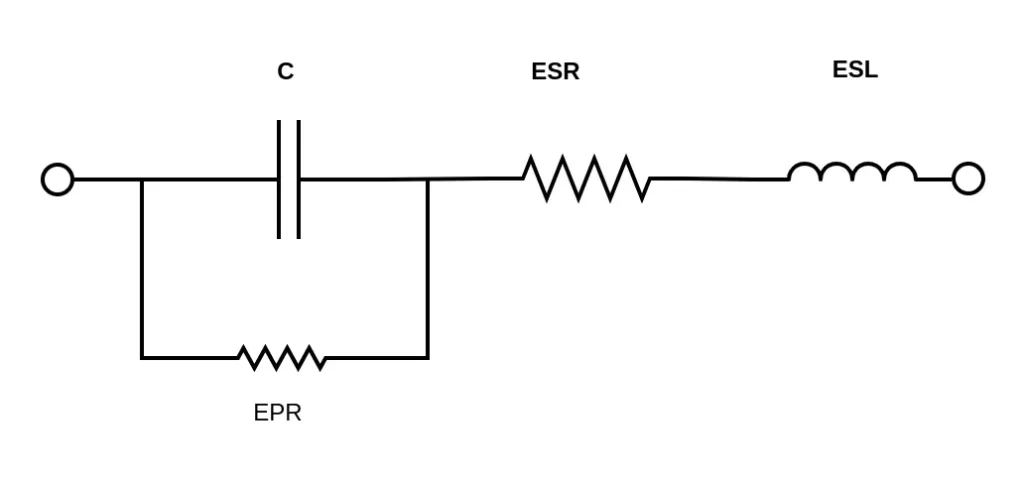
Unlike an ideal capacitor, the equivalent circuit of a real capacitor contains additional elements (see Figure 1). These elements include equivalent series resistance, equivalent parallel resistance (EPR), and equivalent series inductance (ESL). ESR of a capacitor represents the internal resistance, while ESL accounts for the inductance within the capacitor. Engineers consider these factors crucial when optimizing capacitor selection for practical applications.
The impedance of a real capacitor containing ESR and ESL can be expressed as Z = ESR + j(ωESL – 1/ωC). Here, Z is impedance, C is capacitance, and ω is the angular frequency of the alternating current signal. The real part, ESR of a capacitor, accounts for internal resistance. The imaginary part, j(ωESL – 1/ωC), encapsulates the effects of both capacitance and inductance. Figure 2 shows the impedance characteristics of a ceramic capacitor.
A high ESR indicates an increased level of inherent resistance within the component. This elevated resistance results in greater energy dissipation in the form of heat, leading to reduced efficiency and potential performance issues within electronic circuits. A high ESR capacitor can contribute to increased power losses, diminished capacitor responsiveness, and a decline in overall circuit efficiency.
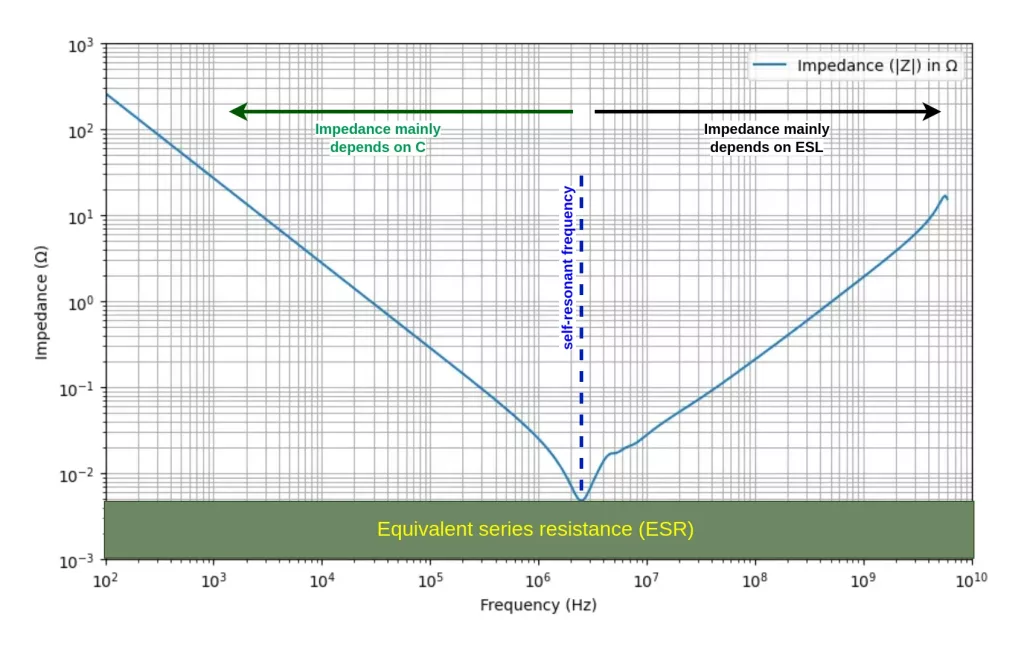
Low ESR capacitors
What is a good capacitor ESR? When selecting capacitors, a low ESR capacitor is generally preferred to ensure optimal performance and reliability in electronic applications.
Low ESR capacitors are ideal for applications where rapid energy transfer is crucial. This includes high-performance electronics, power delivery systems, and advanced audio equipment. In addition, low ESR capacitors enhance circuit efficiency and reduce heat generation, thereby ensuring overall superior performance in demanding electronic environments.
Applications of low ESR capacitors
Some of the applications that demand the ESR of a capacitor to be low or ultra-low include the following:
- Power supply filtering: Low and ultra-low ESR capacitors are crucial in power supply circuits, where they ensure stable voltage levels, minimize ripple, and support rapid charge and discharge cycles. This is vital in applications such as computer power supplies and voltage regulation systems.
- Audio amplification: In high-end audio equipment, low ESR capacitors contribute to signal fidelity and reduced distortion. Ultra-low ESR capacitors are particularly ideal for audiophile-grade amplifiers, ensuring the accurate reproduction of audio signals without introducing unwanted artifacts.
- Switching power converters: Low ESR capacitors are essential in switching power converters. They assist in efficient energy transfer and contribute to the overall performance of devices like DC-DC converters and voltage regulators. Ultra-low ESR variants are ideal for applications with stringent efficiency requirements.
- RF/microwave circuits: Radio frequency (RF) and microwave circuits demand low ESR capacitors to maintain signal integrity at high frequencies. These capacitors are essential in communication systems, radar systems, and wireless devices where minimizing signal losses is critical for optimal performance.
- Electric vehicles (EVs): The power management systems in electric vehicles rely on low and ultra-low ESR capacitors to handle rapid charge and discharge cycles efficiently. These capacitors contribute to the stability and performance of EV batteries, ensuring reliable operation and extended battery life.

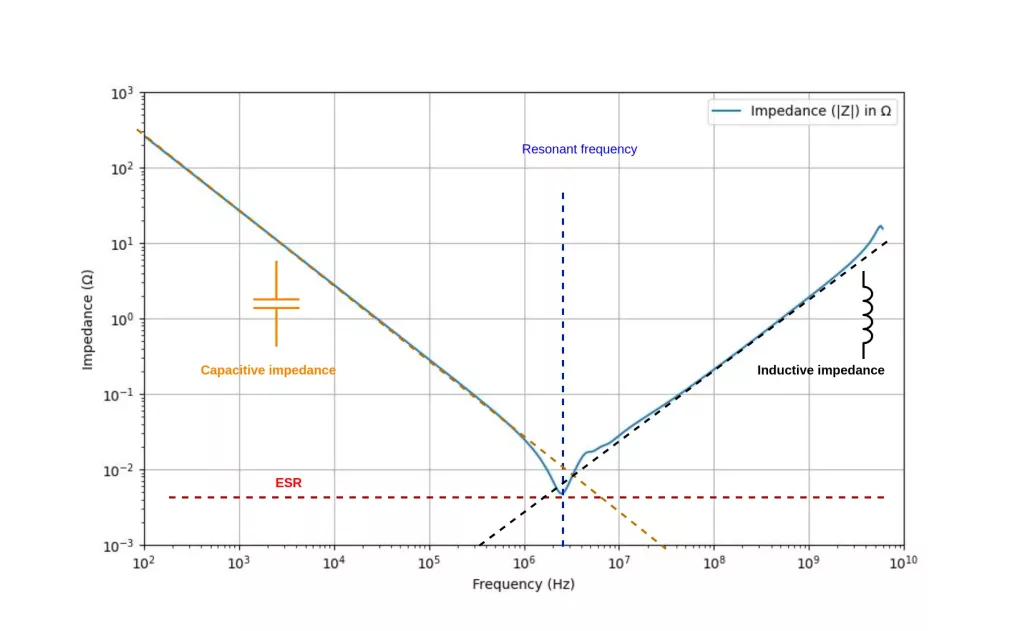
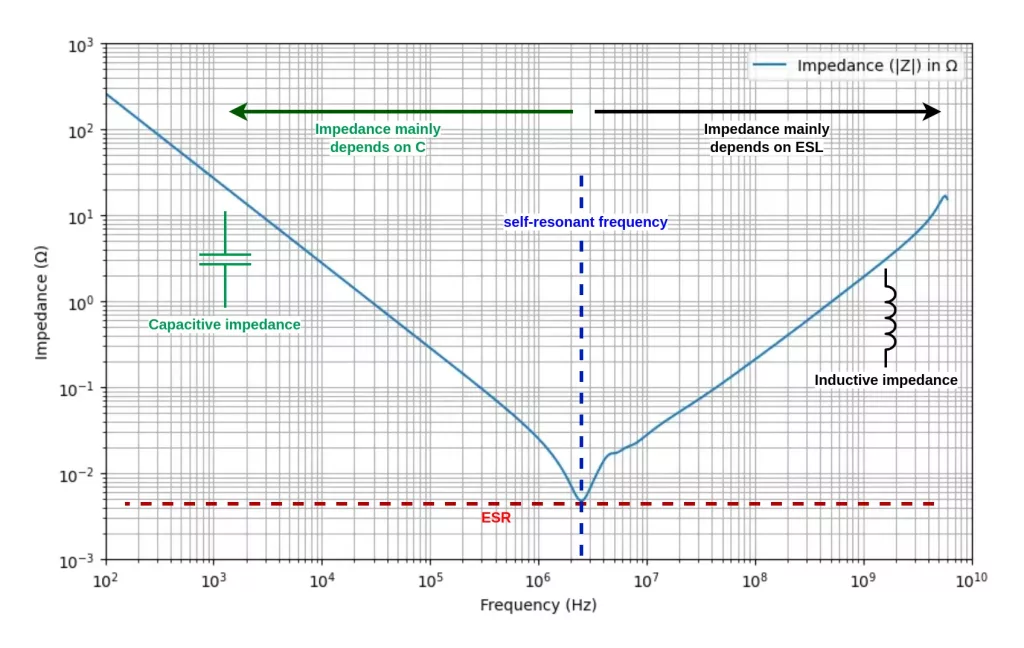
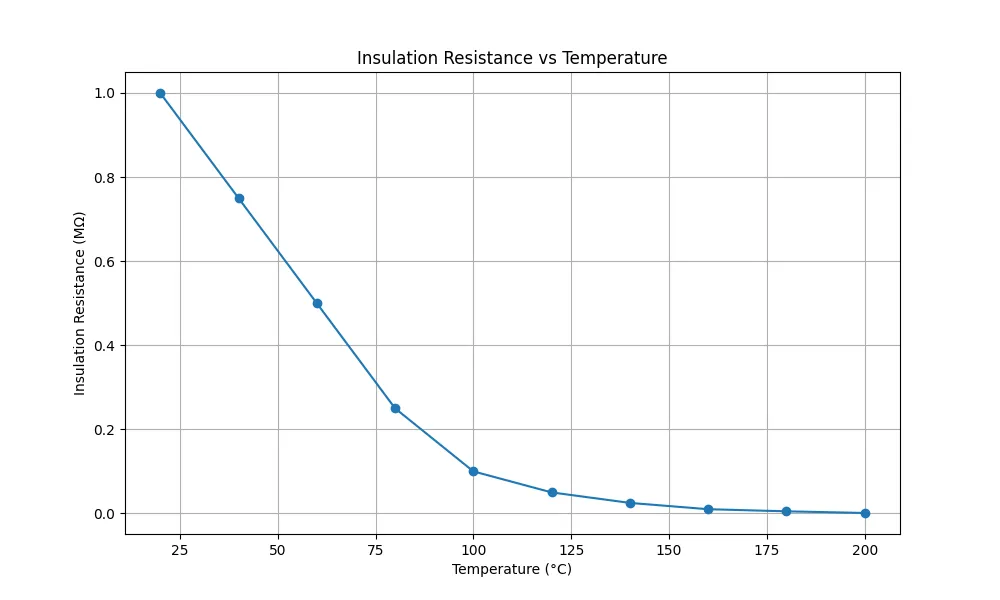
Pingback: A guide to various tantalum capacitor types and their uses -
Pingback: Exploring Aluminum Electrolytic Capacitor Types and their Uses -
Pingback: Impedance characteristics of a capacitor -
Pingback: Insulation Resistance of a Capacitor -
Pingback: Capacitor dissipation factor (tangent of loss angle) -